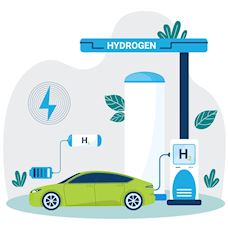
Navigating the rise of technology in construction
In this article we’ll dive into the booming world of smart construction technology, exploring the innovations driving the change and what the future looks like for the industry.

You might know your building products inside out, but if you’re not conveying their benefits in a clear and engaging way, you’ve got next to no chance of catching the eye of a specification writer.
While getting specified is a complex challenge, it’s one you can overcome with better quality marketing communications.
We’ve created this blog to show you how it’s done.
In most construction and manufacturing projects, an architect or engineering consultant prepares drawings and specifications of what’s being built, the materials to use, and what needs costing based on the quality and performance needs. They’ll also take energy and sustainability targets into account, as well as any building regulations, standards or legislation.
These specs contain descriptions of the quality, characteristics and performance of products to be used, often with a list of the manufacturers, brands and model numbers of the products, or their equivalent substitutes.
The research involved in developing the specification can take time, so once a specifier is familiar with a product, they’re likely to use it as an example in many future project specs, and it’s more likely to be quoted for, purchased and used.
1. Create messaging that solves problems
Specifiers and design professionals are probably dealing with several projects at once, so they don’t have time to review manufacturers’ literature, emails or information every day. They need information, but only when they’re ready. And even then, they’re still not interested in your products, but the problems they need to solve.
So make sure you position your expertise around problem-solving, rather than focusing on your product or company Specifiers will be impressed by thought-leading pieces that demonstrate know-how and offer technical advice to help solve certain pressing challenges.
Depending on the project, specifiers will explore everything from environmental impact and noise or dust pollution, to whole life costs. Being seen to be at the forefront of developments with a specialist capability will show them you know your stuff. Remember: they’re looking for trusted advisors and help to solve problems rather than a sales pitch.
2. Be accessible and be found
You need to be visible wherever and whenever specifiers are searching for product or technical information.
This will usually begin with an online search, so make sure you use the same terms in your marketing comms that the specifiers will be typing into Google. If your website has the information they’re looking for, they’re more likely to find it.
Specifiers might also go direct to some manufacturers’ websites – those they trust and are familiar with. If your site is among them, make sure that your product information can be easily found.
They’ll also look through online and offline product directories, industry association resources, media publications, product selector indexes or industry software tools and social media.
Social media is being used more and more, as specifiers can see comments and recommendations from peers, third parties and other specifiers all in one place. So get active on social media platforms and in groups, and if you have loyal supporters, it’ll have a good impression on the specifiers.
There’s no silver bullet though – you should use multiple communication channels because different people gather information in different ways.
3. Be known for something
Articulating a strong brand or single-minded message is a great strength in B2B comms, where time-poor specifiers and decision makers want answers quickly.
Rather than researching every product, specifiers will default to those that are front of mind. So decide the one thing you want to be known for, say it with clarity and keep reinforcing it to give you the best cut-through.
Mixed messages that cram in too much information are weak. You should differentiate yourself from others so it’s harder to substitute your product for theirs.
4. Give specifiers an enhanced user experience
A well–designed website that delivers the right user experience for specifiers is a must. Ideally create a dedicated section where product assets can be accessed immediately.
Well written and stimulating product details and thought-leading information downloads are crucial. Remember too, that architects and design professionals are visually driven and always looking for inspiration, so balance your factual and precise technical details with BIM and CAD content wherever possible.
Having everything in an easily accessible format, can save design professionals hours – making their life easier could give you a big nudge towards getting specified.
5. Keep yourselves front of mind
On-going contact and nurturing with specifiers is important. This could be via post, email and social networking – but only provide valuable information that engages, reinforces your brand’s positioning and supports your expertise.
This, together with online ads promoting technical paper downloads on topics of interest, can drive specifier traffic to your website. It’s also worth seeking out any events, exhibitions, seminars or symposiums where you can gain some face time.
Real person support is key. The technical advisor role continues to be vital, and customer service helplines all play a part too. Every contact point is part of the experience and can influence specifiers’ preferences, even where relationships already exist.
6. Continuing Professional Development (CPD)
There’s plenty of opportunity to engage with specifiers through CPD’s, especially when delivered in their office or through seminars.
Your approach needs to be impartial, with technical detail approved by one of the certification bodies, but it’s also vital to make the presentation engaging and memorable.
CPDs shouldn’t be seen as the end game though. You should always follow up to get maximum return from any CPD investment.
Getting onto the original design specification is great, but it’s not always possible, so you should also target the contractors, sub-contractors, facilities managers, installers, procurement services and anyone else involved in quoting and delivery.
Contractors need to bid to win work, so they’re always looking for competitive pricing opportunities where the spec states that equivalents may be used. Likewise, those bidding to be the main contractor can be convinced to propose product alternatives if they’re confident the products meet the spec.
This makes product benefits and technical clarity equally important, as contractors will want to be sure their proposal meets design professionals’ acceptable criteria. Just remember it’s not simply about price – so highlight your key benefit that may give the contractor an edge in their bid.
Other factors influencing selection
Contractors are becoming increasingly involved in the specification phase, with their deep product knowledge speeding up the process for project owners, design professionals and specifiers.
So if you maintain good communications and relationships with all project parties, you’re more likely to gain acceptance from specification to installation.
As with any marketing communications programme, understanding your audiences is key. Ask yourself all the obvious questions:
You might benefit from focusing your efforts on one type of audience or on one kind of application to build your reputation, whether that’s building type or industry type. Specialise as much as you can, e.g. a glass manufacturer could focus on architectural firms that use large amounts of glass in their buildings.
It’s also important to get an idea of specifiers’ beliefs about your brand or offering from the outset, so you know what needs to be done to shift their thinking through your communications. You can also use this to measure success later.
Identifying the specifiers’ and contractors’ preferences from the competitor landscape will also help you steer more concentrated communications efforts for a greater chance of success.
For more help with influencing product specifiers or perfecting your marketing messages, contact Rachel Arquati on +44 1285 626000 or email r.arquati@clearb2b.com or find out more about why we're the Construction Marketing Awards 'Agency of the Year'.



In this article we’ll dive into the booming world of smart construction technology, exploring the innovations driving the change and what the future looks like for the industry.

Learn how to use presentation opportunities as an effective lead-generation tool in your trade show activity.

Great marketing success comes from keeping your communications focused, engaging and simple to ‘get’ - but that isn’t always so simple to achieve.

With multiple types of technologies being considered, we bring you a snapshot of alternative fuels and review the most prominent pros and cons for each one.